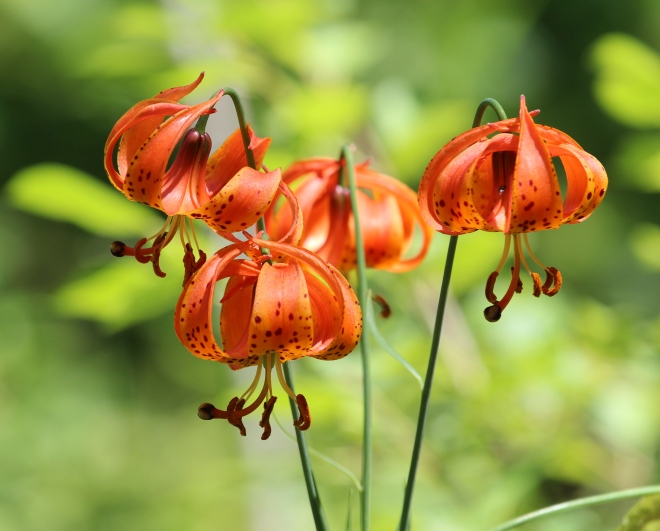The early morning garden is a place of shadows and peace. Cardinals, goldfinches, mourning doves and house wrens ring out their song in neighborhood trees. Already, bumblebees work the flowers — bluebells, bee balm, hyssop and milkweed — buzzing softly. Almost camouflaged in the deep green shadows, a tiny damselfly perches atop a milkweed leaf. An eastern forktail (Ischnura verticalis), its slender body, less than an inch long, is mint green, blue and black. The wings are folded over its back in damselfly style.
Across the backyard, a much larger dragonfly relative hangs from the edge of a hosta leaf, wings held away from its body horizontally. It is a green darner (Anax junius), one of the largest dragonflies in the world at three inches in length and with a wingspan of more than four inches. Its spring-green head and thorax hide it among the hosta. It “wing-whirs”, or rapidly vibrates its wings to warm up its flight muscles — and that movement catches my eye and reveals its presence.
Damselflies and dragonflies are members of the order Odonata, which means “toothed ones”. Unlike the peaceable bumblebees, they are fierce predators, hunting for small insects in the garden and eating many pests. Odonata are descended from some of Earth’s most ancient creatures. Fossils of ancient dragonfly ancestors (Protodonata) date back 325 million years. Scientists believe that bees evolved more recently — about 120 million years ago; the oldest bee fossil discovered so far is about 100 million years old. Both insect families contribute to a healthy garden.






